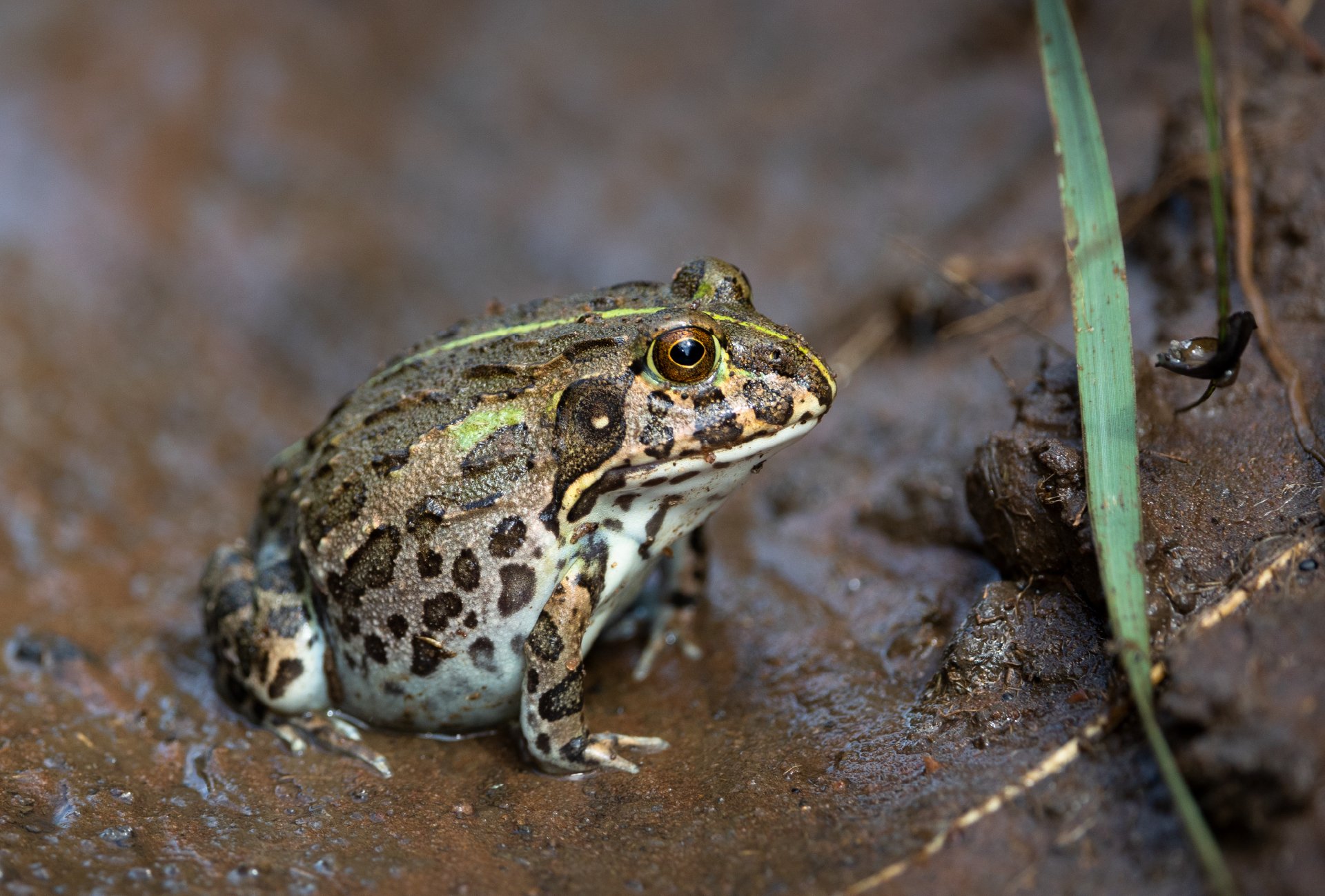THE AFRICAN BULLFROG: AN IMPORTANT RAINY-DAY RESIDENT AT UKUWELA
We think African Bullfrogs are absolutely gorgeous with their metallic sheen and the incredible detail visible in their eyes, don’t you? Read more about them and their importance to ecosystems in our latest blog post below.
Amphibians are often-overlooked creatures that live a double life, so to speak. The Greek word “amphibious” literally means “both lives” and refers to the fact that they spend the first portion of their lives in water breathing through gills and then developing lungs to enable them to breath on land during the adult stages. In South Africa there are only 2 types of amphibians: frogs and toads, with a total of 134 species. So far, we have identified 28 species making their home at our Greater Ukuwela Nature Reserve.
Sunset over the floodplain at Wild Tomorrow’s Greater Ukuwela Nature Reserve - a haven for all wildlife including water-loving amphibians!
This summer was an extremely wet one at Greater Ukuwela Nature Reserve, with heavy rains causing the river to flood seasonal wetlands and large amounts of standing water in puddles and pools right across the reserve. This has resulted in a noisy explosion of frogs including the handsome African Bullfrog, hiding around every corner and behind every tuft of grass.
African bullfrogs (Pyxicephalus edulis) are also known as lesser bullfrogs or edible bullfrogs…the latter being a most unenviable nickname. Apart from being on the menu for a variety of birds, snakes, and other animals, they are also eaten by humans. They love flat, low-lying areas in open, grassy woodland that become flooded after heavy rain or contain shallow, seasonal pans. This exact habitat type at Ukuwela makes our reserve an excellent breeding habitat for this special bullfrog.
Interestingly, the African bullfrog has the ability to enter a hibernation-like state of dormancy inside a cocoon of cornified skin, surviving underground for up to 10 months. This helps them to weather the drier months of the year but when the rains do fall in abundance, African bullfrogs spring to “life” in almost swarm-like numbers.
Breeding is a noisy and aggressive process as males compete with each other for breeding privileges, often fighting to the death. After eggs are laid in shallow, well-vegetated bodies of water, the males guard the eggs and then the tadpoles from predators and other males. Despite the bullfrogs’ best efforts, overall population numbers are declining due to habitat loss outside of specially protected areas but for now, their status remains listed as least concern by the IUCN.
An African Bullfrog at Ukuwela, emerging to a very rainy Summer.
“Disappearing amphibians is one of the most critical threats to global biodiversity. ”
It’s an even sadder story for their cousins around the world. Amphibians are seeing overall major population decline and localized mass extinctions. This is being caused by complex, interconnected issues including habitat destruction, non-native species, climate change, pollution, and diseases - particularly the devastating Chytridiomycosis - the most deadly disease afflicting vertebrates in recorded history.
The extinction rate for amphibians has been estimated to range from twenty-five to forty-five times the background extinction rate. Their loss influences habitats like ours that are home to amphibians because their absence impacts the nutrients they cycle, their role in controlling pests, and more. Their loss can also impact human health, with more mosquito-borne illnesses for example. With permeable skin, amphibians are extremely vulnerable to environmental and water quality degradation. This makes them an important indicator species. Any changes in amphibian populations gives important clues to the overall health of the ecosystem. At Wild Tomorrow, we are glad to have saved and protected over 3200 acres of habitat for amphibians and all wildlife at Ukuwela.
Donate to help us keep habitat safe, connected, and restored for all species including frogs who are vitally important for healthy ecosystems.
References
FrogMAP. 2023. Pyxicephalus edulis Peters, 1854. Animal Demography Unit. Accessed from http://frogmap.adu.org.za/?sp=860; on 2023-05-11.
NextGen Herpetologist. AFRICAN BULLFROG (PYXICEPHALUS EDULIS). Accessed from https://nextgenherpetologist.co.za/2022/10/31/african-bullfrog-pyxicephalus-edulis/; on 2023-05-11.
CNN Space+Science (2023, March 24). A terrifying fungal disease is infecting frogs in Africa. Here’s why it matters. Accessed on 2023-05-11.
We think African Bullfrogs are absolutely gorgeous with their metallic sheen and the incredible detail visible in their eyes, don’t you?




